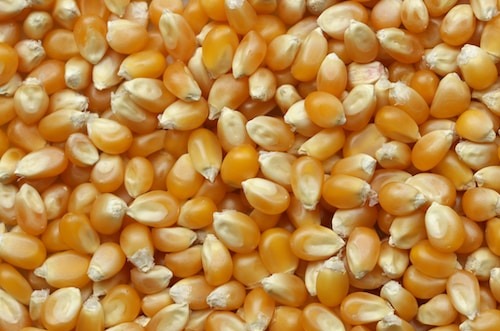W34: Maize (Corn) Update

In W34 in the maize (corn) landscape, the Brazilian corn market witnessed a marginal price uptick. This surge was driven by the producers' cautious approach to setting sales offers while experiencing sluggish domestic sales due to consumers awaiting low corn prices. However, Brazilian corn exports demonstrated a positive trend, even though strengthening the Brazilian real against the United States (US) dollar limited further progress in export parity. Safras indicates that corn prices remain influenced by supply dynamics, as off-season harvests contribute to increased domestic supply and robust corn yield expectations from the upcoming US corn harvest in Sep-23. The average cost of corn stood at USD 10.88 per bag in W34, a 0.52% week-on-week (WoW) increase.
The Foreign Trade Secretariat (Secex) reports that Brazil's corn exports amounted to 5.22 million metric tons (mmt), valued at USD 1.27 billion in the first 14 working days of Aug-23. The daily average corn shipment volume was 373.20 thousand metric tons (mt), while the daily average value stood at USD 90.560 million, with an average price of USD 242.70/mt. This reflects a 2.8% year-on-year (YoY) rise in the average daily export value, a 15.3% YoY increase in the average daily export volume, and a 10.8% YoY price depreciation.
The Buenos Aires Grain Exchange (BCBA) expects Argentina's corn cultivation to reach about 7.3 million hectares (ha) during the 2023/24 season. This projection represents a 2.8% increase compared to the 2022/23 season, which was severely impacted by an unprecedented drought in Argentina's agricultural hub. The Argentine corn planting is slated to begin in Sep-23. BCBA notes that water reservoirs exhibit scarceness across a significant portion of the agricultural terrain, raising concerns regarding the early corn sowing.
Conversely, conditions in the southern agricultural regions are currently deemed suitable and ideal. The El Niño weather phenomenon is expected to boost conditions throughout the southern hemisphere's summer, ushering in rainfall that is poised to substantially alleviate the water deficit in the area. BCBA also indicates that despite commencing the season with diminished reserves and inadequate precipitation, which might hinder early planting, the spring progression will be accompanied by the essential moisture provided by El Niño for delayed planting.
W3 of Aug-23 in the US was marked by unprecedented heat and dryness, particularly impacting the Corn Belt in the midwest region around the Great Lakes. This region has been a prime corn cultivation hub since the 1850s, with states like Iowa, Illinois, Nebraska, and Minnesota contributing over half of the US's corn production. Notably, since the 1950s, almost all farmers in these states have embraced hybrid corn varieties. However, recent extreme weather conditions are posing a challenge as the end of Aug-23 witnesses scorching heat and a lack of rain. These conditions put US corn yields at risk, ultimately influencing global market prices.
Until August 19, corn prospects seemed promising, even though it was one of the coldest weeks in the past 30 years for the Corn Belt. Subsequently, rainstorms arrived, followed by an unprecedented heatwave in the latter part of the summer month. Meteorological records indicate that W3 or W4 of Aug-23 has never been as hot and dry,with daytime temperatures reaching 32 degrees Celsius (°C) to 37°C and nighttime temperatures not dropping below 22°C to 26°C. While there have been sporadic rains around the Great Lakes, a significant portion of the region remained with no rains for an extended period, leading to noticeable soil moisture deficits that adversely affect corn crop outlooks. The drought impact was felt by 49% of the Corn Belt in W1 of Aug-23, decreasing to 42% by the end of W2 of Aug-23, yet still encompassing a substantial area.


